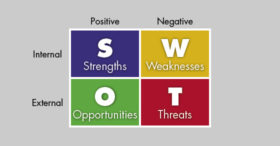The investment “opportunity” could be anything from a new nutritional supplement to a foolproof method for “flipping” houses. But if the investment or product is advertised as “easy money” or promises immediate high earnings, beware. Although there are plenty of legitimate business opportunities out there, there are also plenty of fraudulent schemes that exist for no other reason than to steal your money.
Simple or complicated
These schemes can be relatively straightforward. For example, one New York state man was convicted of enticing investors to sink $10,000 each into a vending machine distribution business he promised would be profitable — even though it was set up to fail.
But they can also take the form of complicated pyramid schemes that generally offer no actual product or service and are sustained by constantly recruiting new participants. Often, these schemes are couched as “clubs” or “gift programs” and promoted through social networks. Whatever they’re called, they usually end the same way: When the pyramid collapses, only the “founders” walk away with any money.
FTC safeguards
To assist potential investors, the Federal Trade Commission (FTC) has established a Business Opportunity Rule. Among other things, the rule requires sellers to produce a disclosure document and to detail any earnings claims in a separate statement.
Sellers also must disclose prior civil or criminal litigation involving claims of misrepresentation, fraud, securities law violations, or unfair or deceptive business practices; outline any cancellation or refund policy; and provide references nearest to the potential buyer’s location. Furthermore, the disclosure document must be written in the language in which the buyer and seller discussed the opportunity. For more about the rule, visit ftc.gov.
Practical tips
In practical terms, you can protect yourself by studying the disclosure document, earnings claim statement and proposed contract, looking for potential loopholes that might benefit the seller at your expense. For example, are start-up costs particularly high? Is the seller required to buy back inventory you’re unable to sell or would you be out-of-pocket?
Other tips to protect your money:
- Research the seller’s history and reputation online and check for complaints with the Better Business Bureau. (Note that the absence of complaints doesn’t necessarily mean the seller is aboveboard.)
- Find out if there’s an actual market for the business’s products or services.
- Talk to current investors or participants and ask tough questions.
- Ask your legal and financial advisors to review any documents you don’t understand, including the contract.
When to walk away
If you suspect a business opportunity is fake, turn it down. Then report it to your state attorney general’s office, your county or state consumer protection agency, and the FTC. But if you’re unsure about the legitimacy of an offer, contact us. We can help you evaluate it.
© 2020 Covenant CPA


